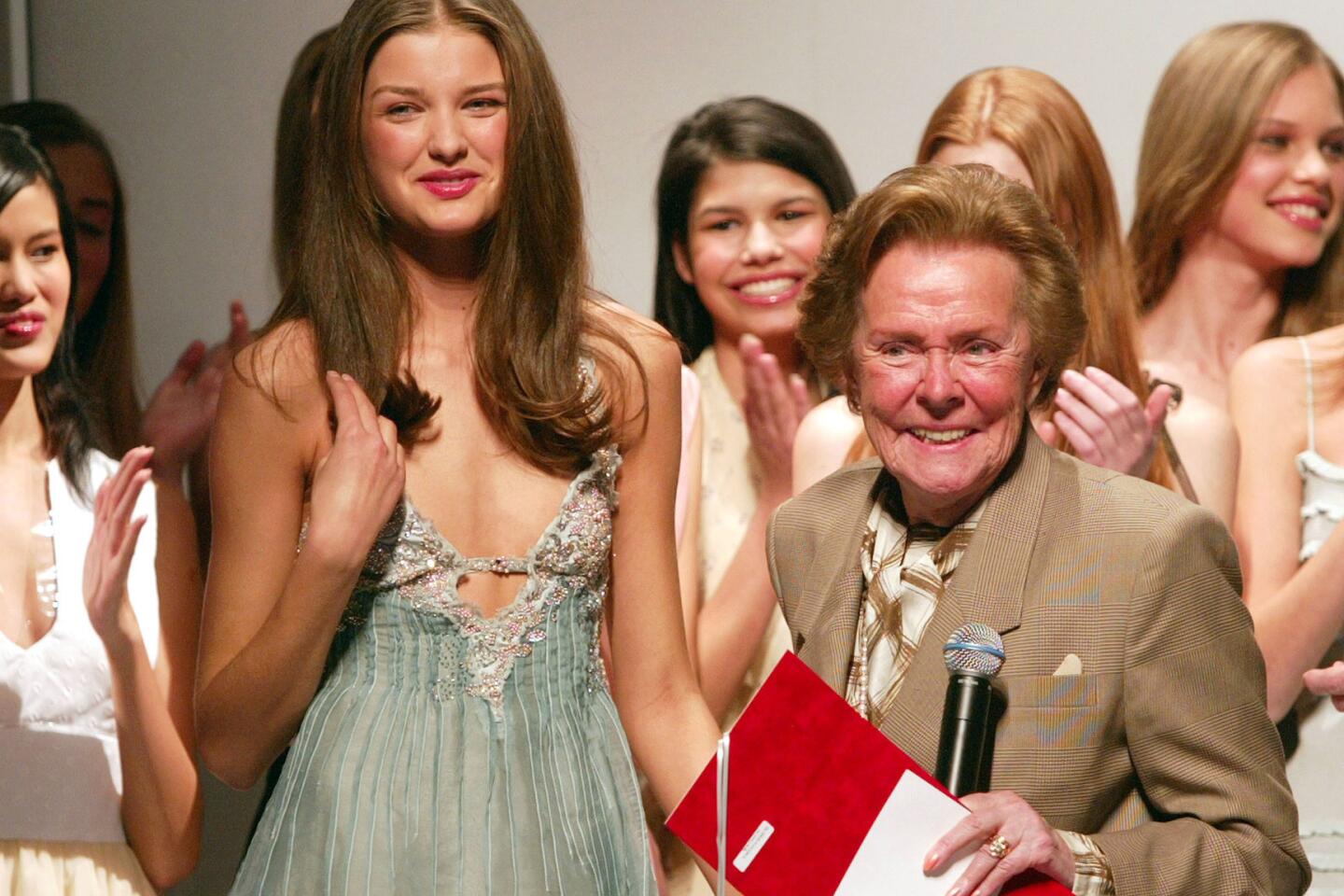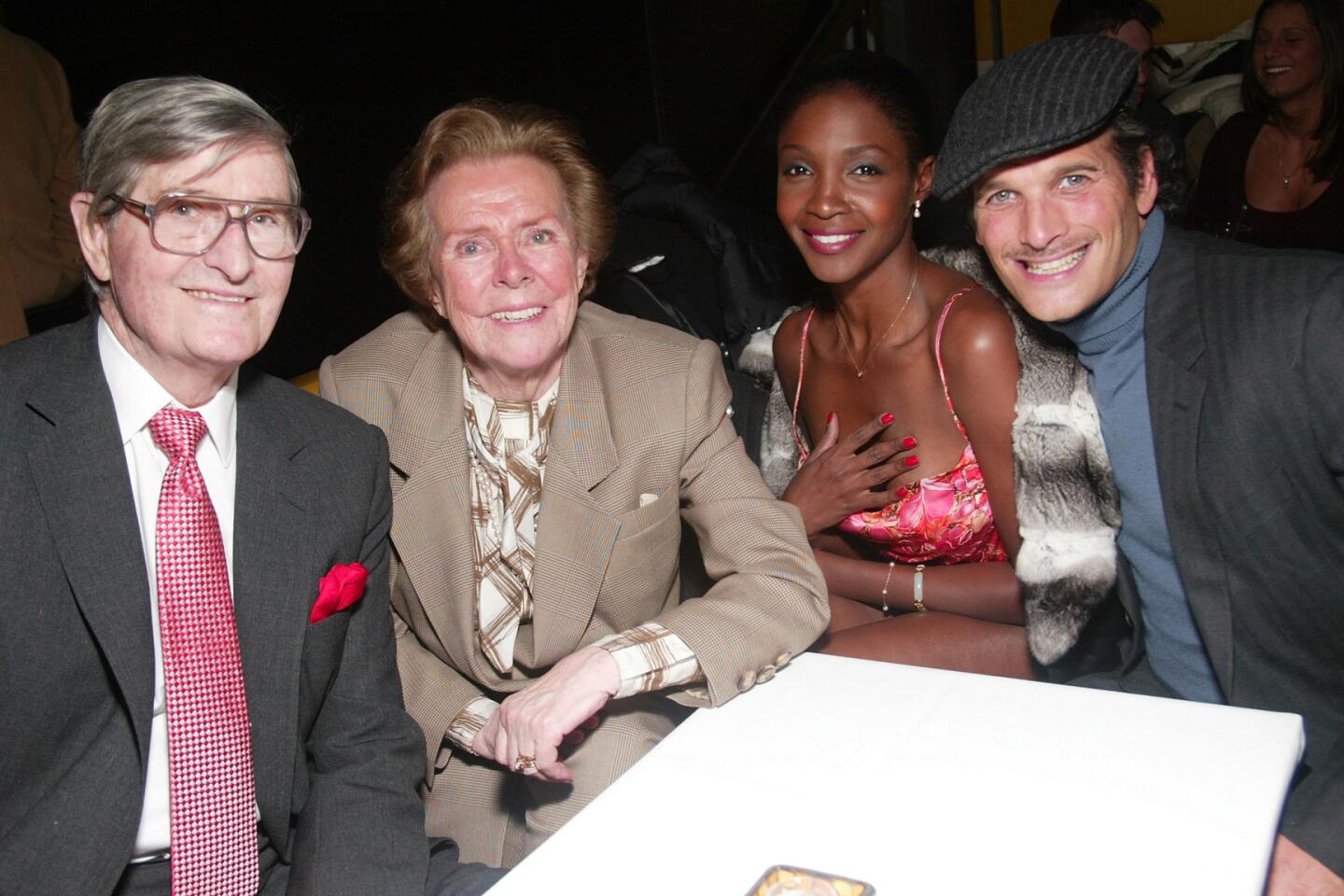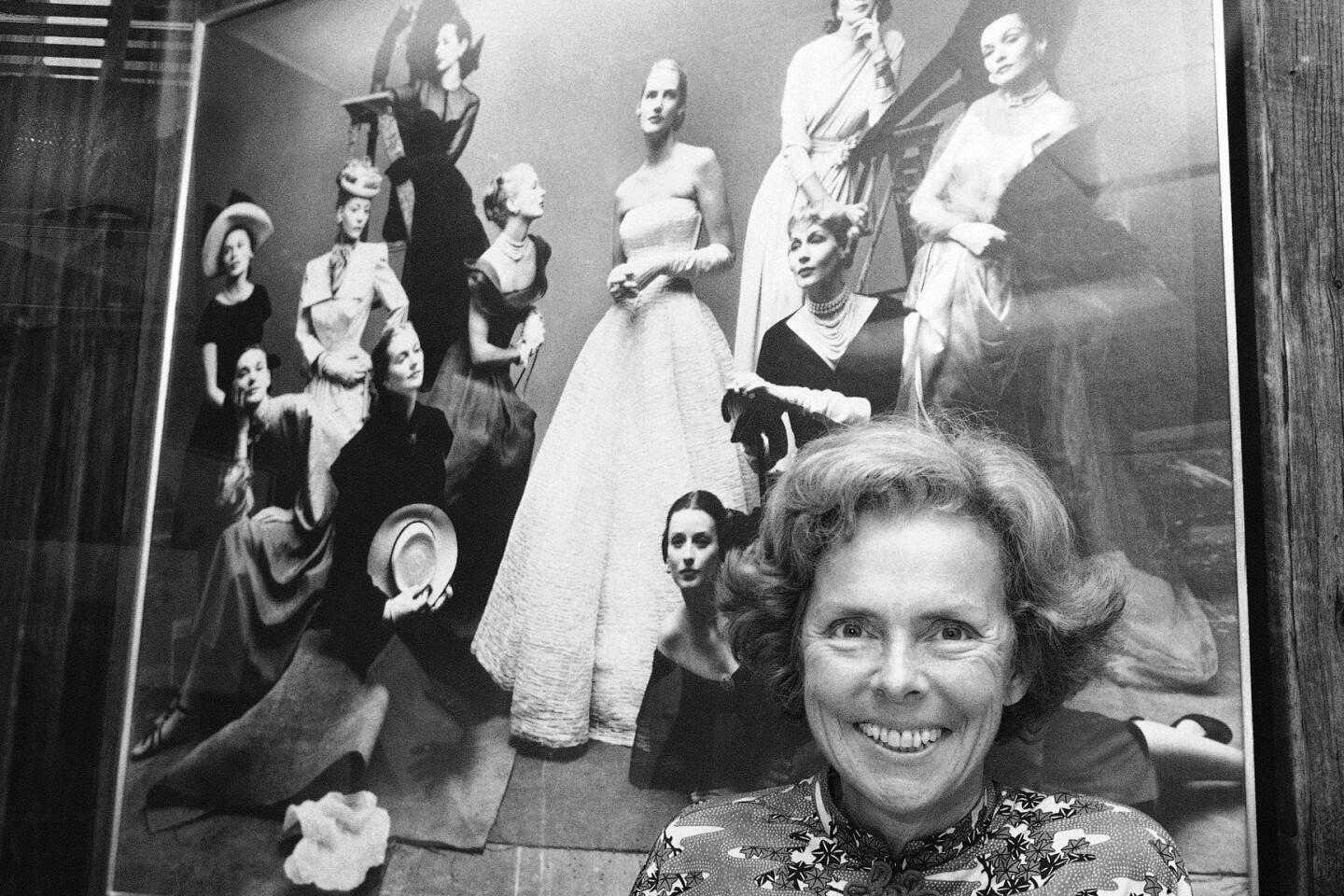Eileen Ford dies; her agency set standards for the modeling industry
Eileen Ford, the doyenne of the modeling business, whose Ford agency set standards for the industry, launched superstars such as Brooke Shields, Christie Brinkley and Naomi Campbell, and shaped American ideals of beauty in the 1960s and beyond, died Wednesday at a hospital in Morristown, N.J. She was 92.
Her death was announced by her daughter Katie Ford, who said her mother had severe osteoporosis and a non-cancerous brain tumor.
“Eileen Ford created the 20th century’s largest and most successful model agency, representing and advancing the careers of hundreds of the world’s most famous models,” said biographer Robert Lacey.
“With her husband Jerry Ford she worked to improve models’ working conditions and wages after the Second World War, reforming the lax and tardy payment practices that were the norm in the industry at that time and … laying the economic basis for the modern phenomenon of the supermodel,” Lacey said.
Among the careers Ford nurtured were those of Suzy Parker, Wilhelmina, Tippi Hedren, Maud Adams, Martha Stewart, Jean Shrimpton, Ali MacGraw, Candice Bergen, Lauren Hutton, Kim Basinger, Cheryl Tiegs, Jerry Hall, Elle MacPherson, Christy Turlington and Beverly Johnson, the first African American to appear on the cover of Vogue, in 1974.
“Her lasting impact was to create a template within which models … felt that they would not be exploited, would be well-paid and would be respected,” said Michael Gross, who wrote the 2003 book “Model: The Ugly Business of Beautiful Women.”
Ford entered the business after World War II, but the Ava Gardner pinup was not her ideal. She scouted for women with a certain demure appeal — clean, fresh and approachable.
She favored long-necked blonds with straight noses and light-colored eyes that she thought were more camera-friendly. They were not busty but fairly evenly proportioned at 34-24-34.
She was criticized for her narrow vision. “I don’t think that perception was unjustified,” Katie Ford, who took over the business in 1995, said Thursday, but “that’s what worked well in America at that point.”
Ford was not out to revolutionize standards of beauty: She was first and foremost a businesswoman with a keen sense of what would sell. Her vision spread not only across America but to fashion capitals around the world.
“I create a look and I create a style,” she once said after a scouting trip to Europe. “American girls mean a great deal to me. I help them understand how they can look better.”
Ford was born in New York City on March 25, 1922, to Nathaniel and Loretta Marie Otte, who owned a company that determined credit ratings of corporations. She and her three brothers grew up in affluence in Great Neck, N.Y. Ford later told People magazine that her wealthy parents provided them with “perfectly marvelous lives” and a sense of security that became a great advantage when she went into business.
“My family believed I could do no wrong,” she said. “That’s probably why I have utter confidence in myself — even when I shouldn’t have.”
She graduated from Barnard College with a degree in psychology in 1943 and gravitated toward the fashion world, perhaps because her mother had been a model. Ford herself modeled during college breaks.
After graduating, she worked as a photographer’s stylist, copy writer and fashion reporter.
In 1944 she met and married Gerard “Jerry” Ford, a Notre Dame student and football player. He later attended business school while working for Ford’s father.
In 1946, when she was pregnant with their first child, she began to manage bookings for two model friends. “I started to take bookings from home, to make money to take care of the baby,” she told the Hamilton Spectator in 1997.
By 1948 Ford’s roster had grown to more than 30 models, and revenues reached $250,000. Her husband quit school and together they founded the Ford Agency. She managed and scouted for talent while he handled the financial side.
Jerry Ford died in 2008. She is survived by three daughters, Lacey Williams of Los Angeles, Katie Ford of New York, and Jamie Craft of Washington, D.C.; a son, Bill Ford of Palm Beach, Fla.; a brother, Bill Otte of Charlotte, N.C.; eight grandchildren; and five great-grandchildren.
By the early 1950s the Ford agency was a force, with early stars like Parker and Jean Patchett dominating magazine covers.
Ford also professionalized a business that had few ethical standards. She became the mother her models didn’t want to cross, setting curfews for the youngest ones and putting them up in her town house so she could keep an eye on them. She often told how Turlington used to creep downstairs and hide her clothes in the oven after changing into party wear and then sneak out of the house.
She was strict with those who worked with the young women, too.
“It was at a time when many photographers felt that if you booked a model, you have the right to go out with them. But if a photographer so much as asked a model out on a date, they would hear from my mother,” Katie Ford said. “She would say. ‘If you ever want a Ford model again, don’t you dare ask them out on a date.’”
Ford also fiercely guarded her models’ clean image, keeping them out of ads for bras and antiperspirant, for example, and allowing only a modest baring of bosom.
She and her husband also looked after their models’ finances, collecting the fees and making sure they were paid on time. Jerry Ford took the lead in securing deals to promote cosmetics and fashion lines such as Ralph Lauren that were extremely lucrative not only for the models but for the agency and its clients.
“Eileen was the first to start everything that was helpful to models and their agents,” Nina Blanchard, who sold her namesake agency to Ford in the 1990s, told the Hamilton Spectator some years ago. “That was really groundbreaking.”
Ford eventually expanded abroad, opening offices in Europe and South America. But by the 1970s the agency’s influence began to wane as rivals such as Wilhelmina Cooper and John Casablancas moved into its territory. The model wars commenced, with some prominent defections; Brinkley, for instance, briefly joined Casablancas’ Elite agency before being wooed back to Ford, who sued Elite when it opened in New York. Insults were publicly traded. “What gets me is the permanent, ever present nastiness of Eileen Ford,” Casablancas once said.
The family sold the agency in 2007. But its founder kept a watchful eye on the ever-shifting business she pioneered.
“Beauty changes,” she told Women’s Wear Daily in 2010. “Certain features don’t change. However, a ‘look’ changes. Looks change because clothes change ... and therefore the person in them has to be different. For instance, now you see girls with big bosoms. Back when I started, no one had bosoms…. It’s always fascinating to watch.
“I’ve seen everything change.”
More to Read
Start your day right
Sign up for Essential California for the L.A. Times biggest news, features and recommendations in your inbox six days a week.
You may occasionally receive promotional content from the Los Angeles Times.












